 While thinking about what I would like to share today I realized it is getting closer to Earth Day. That made me think about what type of environmentally friendly Earth Day project I could share today. That led to my children's book area where I found a book I had forgotten I had, "Gardening Wizardry for Kids" by L. Patricia Kite.
While thinking about what I would like to share today I realized it is getting closer to Earth Day. That made me think about what type of environmentally friendly Earth Day project I could share today. That led to my children's book area where I found a book I had forgotten I had, "Gardening Wizardry for Kids" by L. Patricia Kite.
Children love bugs! The creepier and crawlier the better so when I found the page on Snails I stopped to read what it had to say. I realized I had found something I wanted to share, studying snails! There are about 80,000 kinds of snails in the world. They can live almost anywhere; oceans, deserts (I never thought of snails in the desert), forests, rivers and many gardens. THey do a lot of damage wherever they are as they can eat just about any type of food.
There are about 80,000 kinds of snails in the world. They can live almost anywhere; oceans, deserts (I never thought of snails in the desert), forests, rivers and many gardens. THey do a lot of damage wherever they are as they can eat just about any type of food.
Garden snails are related to clams and oysters (interesting), which live in water. Like them, snails must have a living area that is damp and shady. During the daytime and in dry weather snails close up their shell "door". They seal it shut with "slime" or mucus (something gross children, especially boys, love to laugh about. This is the same mucus the give of as a damp cushion when they travel.
For a snail project where you will be able to observe and journal what snails do you will need:
- 1 gallon jar or plastic container. You could use a milk jug, but You would not be able to observe anything but what you could see from above.
- 2 or 3 garden snails. You would think with all the trouble I have been having with the little guys there would be no problem finding some, wrong! My chickens have been so dedicated in their pursuit of whatever moves that there was a dearth of snails. I finally located 2 of them hiding in the trunk of the palm tree (there are remains of old palm fronds that present excellant hiding places. The two snails looked different and one had a softer shell but they would work. The one with the softer shell had a black foot so I will call him Ebony
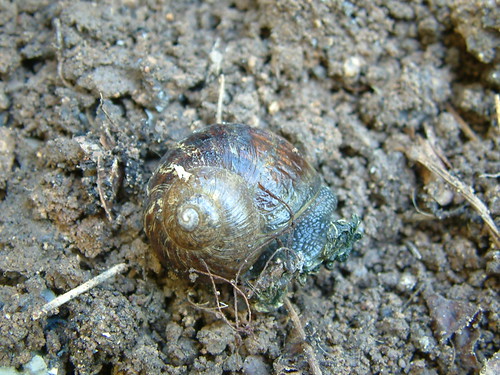 the other I will call Sienna.
the other I will call Sienna.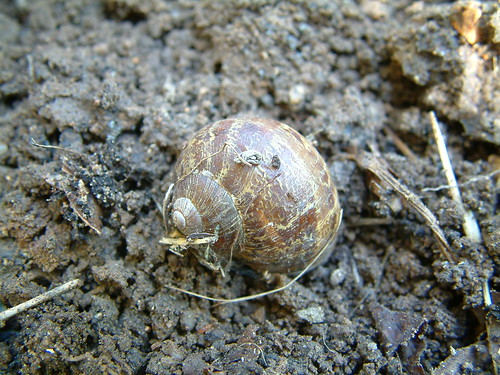
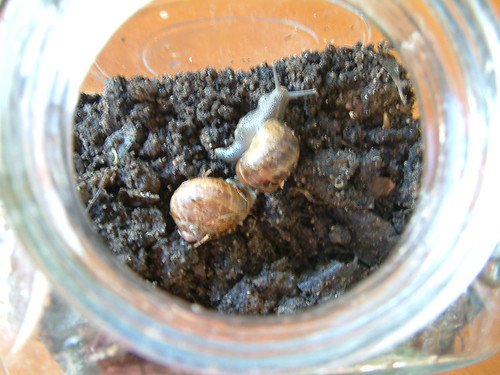
- earth without lumps
- a clean can, (I used a piece of broken clay pottery)
- some twigs or a small branch
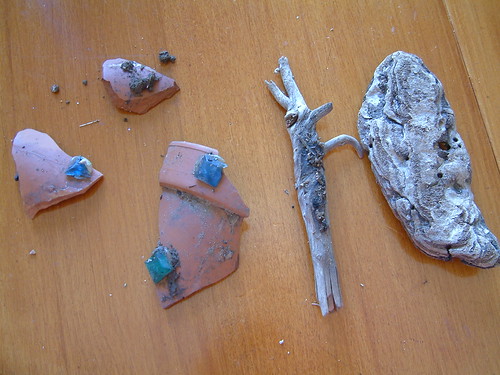
- water
- Fill the jar about 2/3 full of earth (Make sure you start out with the 1 gallon jar. I thought I could get by with a little quart jar and soon found out it was way too small)
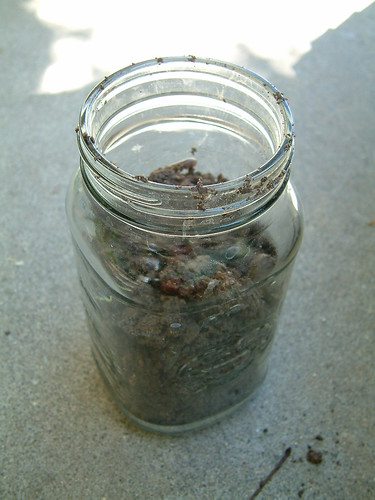
- Put in a twig or two for the snails to climb on.
- Lay a small empty can, or pottery sideways, burying it a little in the earth. This is a nice shady spot for the snails to hide in.
- Pour in 1/2 cup of water to dampen the earth.
- Now add your snails.
- Cover the jar with something the snails won't eat, like several pieces of aluminum foil. (I used plastic wrap so that I could watch them slide over it and observe their underbellies.
- Make small holes in the covering so that the snails can breathe. Like all living things, they need air to survive.
- Put the jar in a cool shady place if you want your snails to move about in the daytime.
I taped a brown lunch bag around the back and sides for added shade to keep them in a more desirable climate.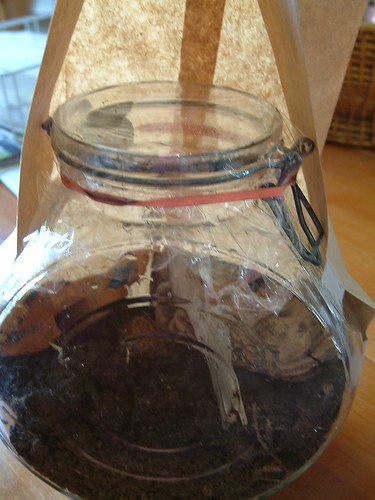
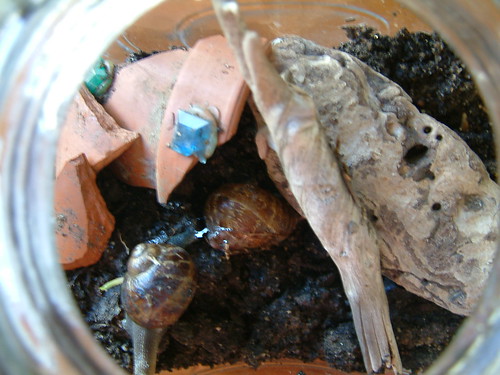
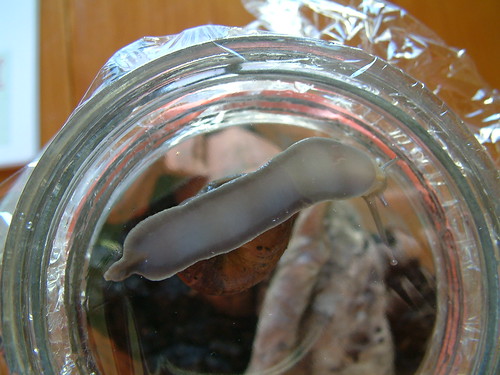
What to feed your snails:
- leftover lettuce leaves
- orange peels
- potato peels
- most fruit or vegetable scraps
Add more when the old food is gone.
A snail has 21,000 sawlike teeth on its long tongue. It smells food with its two lower feelers, of tentacles. It eats quickly.
Since snails need calcium to keep their shells strong and healthy, you would want to add a piece of eggshell into the container about once a week.
If your snails are well kept, they may mate. Since each snail is both male and female they can both lay eggs, but you need two to mate in order to have fertile eggs. After mating each snail digs a hole in the earth with its foot. Into the hole go about 40 white rubbery eggs. In about a month the babies hatch out.You might see this in yur container if you are patient.
Your snail can live for about four years in well cared for.
The older the snail the more whorls on its shell.
Snails may seem icky, slimy, gross and destructive (which they are) but they play a vital role in this earth's ecology. The help break down decaying matter and they replenish nutrients in the soil through their waste. They also are a protein food source to many species of animals (like my chickens). Even some people like to eat snails; escargot. That is how the brown garden snail ended up in California, but that is another story and can be another adventure to find in the library.
Kathleen


No comments:
Post a Comment